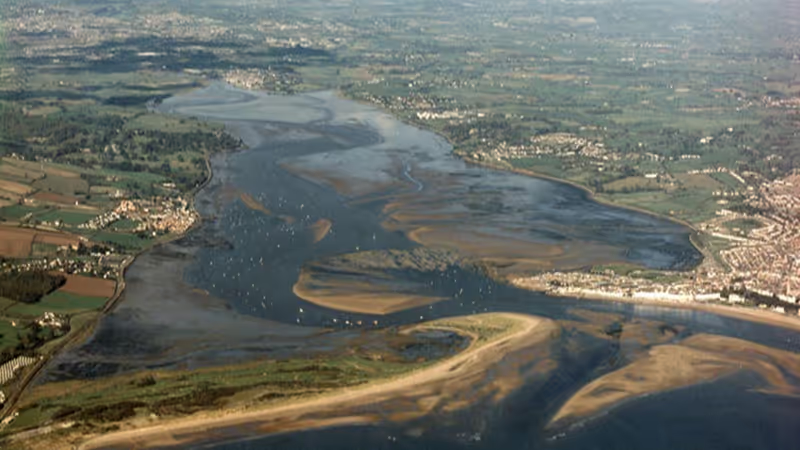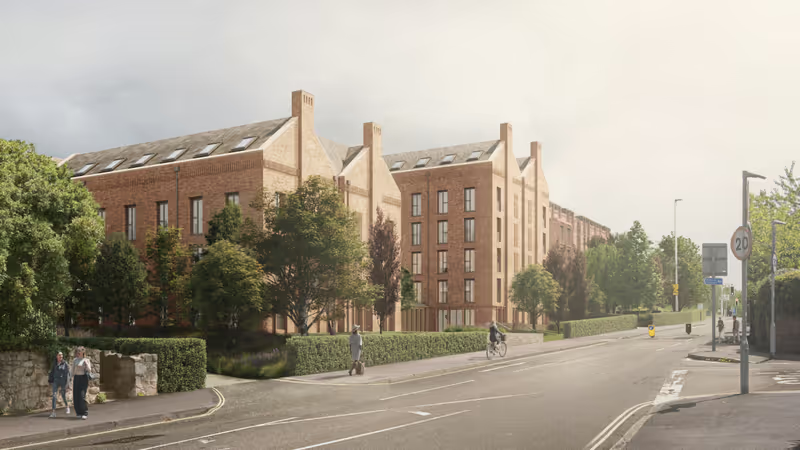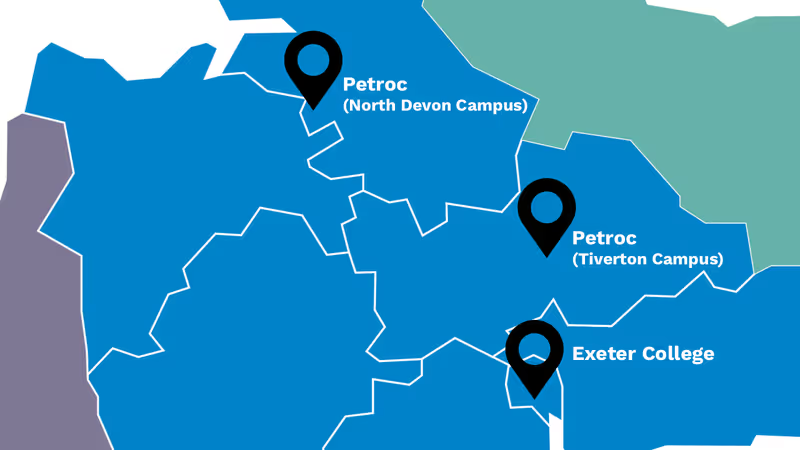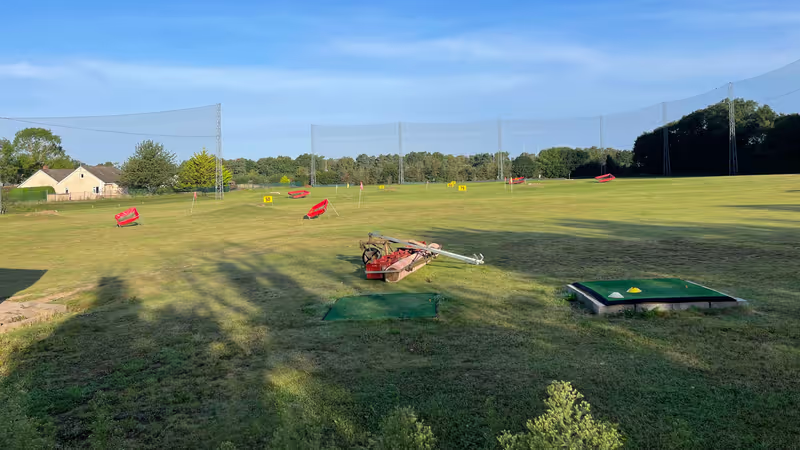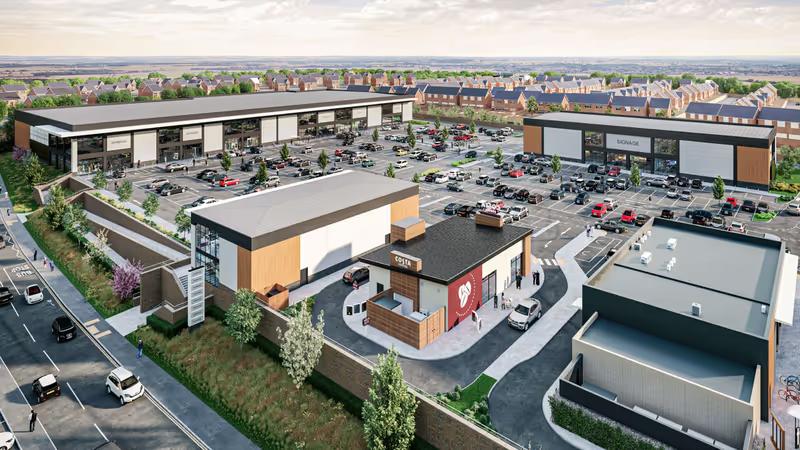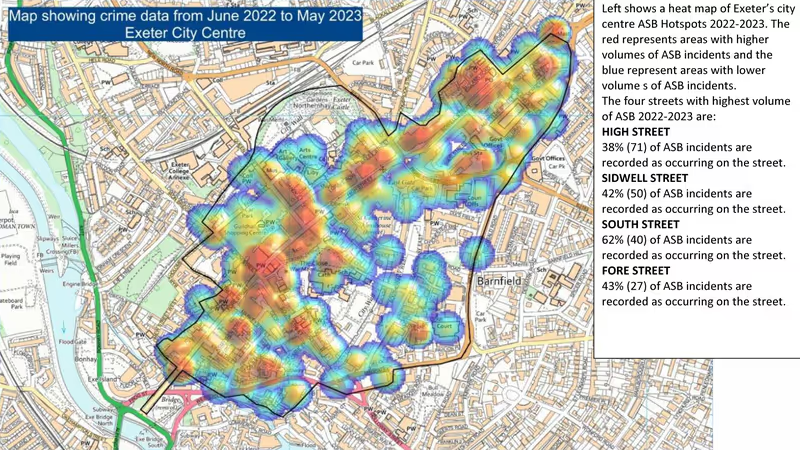The developer of an energy plant proposed for a Riverside Valley Park public open space has said that its “primary source of heat generation” will be from on-site air source heat pumps despite previously presenting River Exe water source access as central to the scheme.
Exeter Energy, a Leeds-based company controlled by 1Energy Group and Asper Investment Management, is due to receive £42.5 million from the government Green Heat Network Fund to construct a 13-mile underground Exeter district heating network and a heat exchanger to power it.
The company decided that Grace Road Fields, a fifteen acre ex-playing field between Exeter Ship Canal and the railway line that forms part of the valley park, is the “most suitable” site for the plant without explaining why other nearby brownfield sites, including Belle Isle Depot or land in Marsh Barton industrial estate, are not more suitable locations.
 Grace Road Fields in morning mist
Grace Road Fields in morning mist
When the government announced the funding last January it said the heat network would use “the UK’s largest high-temperature water source heat pump”. Exeter City Council said the same thing, as did the government’s investment scheme delivery partner, in announcements promoting the scheme.
An unpublished report to last July’s Exeter City Council executive meeting also confirmed that the funding had been awarded “to provide a green heating network utilising water source heat pumps drawing water and heat from the River Exe”.
A public exhibition launched by the company two days later repeatedly presented the River Exe as the key to the scheme and an accompanying website said: “Where will the heat for the Exeter Energy Network come from? We will use a water source heat pump to take heat from water and boost it to the required temperature.”
 July 2024 Exeter Energy exhibition River Exe display board. Source: Exeter Energy.
July 2024 Exeter Energy exhibition River Exe display board. Source: Exeter Energy.
The July exhibition also said that the plant’s developer “intended” to rely on other heat sources such as an on-site air source heat pump, a proposed data centre and “in the future potentially using waste heat from other nearby industries”, referring to the adjacent Marsh Barton waste incinerator, Exeter’s largest single source of carbon emissions, described by its operator as an “Energy Recovery Facility”.
It added that the “intention” was to “completely remove” the use of the backup gas boilers on which the energy plant would rely “in the coming years” so that the plant would one day “provide zero carbon heat”.
It remains to be seen whether finance will be found for a data centre located on a floodplain. But an unpublished briefing note provided to the city council said: “There is no relation between the Exeter Energy Network and the Marsh Barton ERF. The Exeter Energy Centre is independent of the ERF.”
 Grace Road Fields Exeter Energy plant aerial view indicative render. Source: Exeter City Council.
Grace Road Fields Exeter Energy plant aerial view indicative render. Source: Exeter City Council.
In November the company contradicted itself again, while its enthusiasm for River Exe water power apparently began to wane.
It provided another briefing note in which it said Grace Road Fields was the best site for the plant because of its proximity to “a number of potential sources of low-carbon energy”.
It said it would connect to “at least one” of these sources, which it said were the Marsh Barton waste incinerator and the River Exe, adding: “latent heat from the river could be used as a source of renewable energy for the project”.
It also said the adjacent council solar farm could be used as a source of electricity for the plant. But the 1.2MW photovoltaic array at the council solar farm is only capable, in optimal conditions, of producing less than a quarter of the 20MW heat plant’s 5MW electricity needs – and is already being used to charge council electric vehicles at its Exton Road depot.
 Grace Road Fields Exeter Energy plant layout plan. Source: Exeter City Council.
Grace Road Fields Exeter Energy plant layout plan. Source: Exeter City Council.
Then, in December, Exeter Energy applied to the city council for outline planning permission to construct the energy plant in Grace Road Fields, reserving matters other than layout, access and scale for a future application.
The Design and Access Statement included in the application documents doesn’t mention the River Exe. Instead it says: “The primary source of heat generation will be from the air source heat pumps located adjacent to the energy centre”, a 315 feet long building at the centre of the plant.
It adds: “The function of the energy centre is to accommodate plant equipment which produces 20MW+ of hot water to supply the district heating network” including “air-source heat pumps, peak and reserve gas boilers, network pumps and other ancillary mechanical and electrical equipment”.
It also says the “flagship scheme” would provide a “cost-effective alternative to individual building air source heat pump solutions”, and will be “future-proofed” to allow the possibility that it might “take waste heat from adjacent Marsh Barton Energy Recovery Facility and from the proposed data centre”.
 Grace Road Fields Exeter Energy plant view from station indicative render. Source: Exeter City Council.
Grace Road Fields Exeter Energy plant view from station indicative render. Source: Exeter City Council.
The application documents also include a formal planning statement. This only mentions the River Exe in relation to flood risks and levels of on-site noise – not from the plant but the river.
It also claims that the city council’s 2019 decision to grant itself planning permission for a solar farm on an adjacent ex-landfill site means Grace Road Fields is “not bound” by what it calls the “aspirations” of the Riverside & Ludwell Valley Parks Masterplan, a supplementary planning document that forms part of the local development framework under the current local plan.
The masterplan was adopted nine years ago, but the council said in 2021, two years after approving the solar farm, that it was needed because of the impact of Exeter’s growing population on the Exe Estuary, a protected European wildlife site – an impact which must be mitigated, by law.
It said: “One of the elements of the mitigation strategy is the enhancement of alternative natural green space, and the council has identified these two parks for this purpose.”
It added: “Fundamentally, the plan sets out where new areas of public recreational space can be created, and where improvements to existing space can be made.”
The valley parks masterplan itself, which designates Grace Road Fields as a recreation ground, says it is “a key place for woodland planting, and forest clearings and openings can be created to provide opportunities for picnicking and fire pits for families to gather around.
“A picnic and barbecue area could be developed with a seasonal camping ground, and the field could be rented for festivals and events, from country fairs to farmers markets or folk festivals.
“This can all be supplemented by a peripheral walking route that will connect to the Alphin Brook to enable people to access 20 hectares of new natural green space.”
 Riverside & Ludwell Valley Parks Masterplan map. Source: Exeter City Council.
Riverside & Ludwell Valley Parks Masterplan map. Source: Exeter City Council.
The planning statement also says that the Grace Road Fields planning application should be determined “in accordance with the development plan and any other material considerations”.
The Water Lane Supplementary Planning Document, which has been a material consideration in the determination of planning applications since its adoption last July, includes a policy which specifically addresses Grace Road Fields.
Among eight possible uses which it says “are being considered” for Grace Road Fields it lists an energy centre. However it also identifies five other uses which, it says, any proposals for Grace Road Fields “should prioritise”.
These include enhancing nature and biodiversity, establishing the area as a “regional destination for recreation and water-related activities” and improving recreational opportunities, access to the canal and walking and cycling connections between Marsh Barton, the station and the valley park.
At the same time, the final version of the new Exeter Local Plan says development in the valley parks should only be permitted if it “does not harm the key purposes for which the valley parks are designated” including “provision of opportunities for informal recreation, areas of tranquillity and access to nature”.
It adds that development proposals which are contrary to the Riverside & Ludwell Valley Parks Masterplan will not be permitted.
 Unpublished report to July 2024 city council executive meeting. Source: Exeter City Council.
Unpublished report to July 2024 city council executive meeting. Source: Exeter City Council.
So can we count on Exeter City Council to protect Riverside Valley Park from unwarranted development by invoking local planning policy and directing Exeter Energy to a more suitable site for the plant now it will not be powered by a River Exe-fed water source heat pump?
When the council executive met last July to discuss Exeter Energy’s heat network proposals it did so in private, with press and public excluded. The focus of the unpublished report it received was the sale of part of Grace Road Fields to Exeter Energy.
Before the executive recommendation to approve the sale in principle had been signed off by the full council, a decision which was also taken in private, Exeter Energy tried to lobby 70 local councillors and other stakeholders at a private event promoting its plans, although only nine invitees turned up.
(The public exhibition it subsequently ran was similarly unsuccessful: it only received six completed feedback forms and was compelled to acknowledge Exeter Civic Society’s objection to the plant’s location in the Riverside Valley Park.)
But the council is not permitted to proceed to a sale based on its July decision alone. As the unpublished executive report points out, because Grace Road Fields is part of the Riverside Valley Park the council is required by law to hold a public consultation on its disposal, and must “consider any objections to the proposed disposal which may be made” before re-affirming the decision to sell.
 Grace Road Fields sale consultation, 28 November-31 December 2024. Source: Exeter City Council.
Grace Road Fields sale consultation, 28 November-31 December 2024. Source: Exeter City Council.
The council duly opened a public consultation on the sale of part of Grace Road Fields – not the parcel of land councillors had agreed to sell in July but a much larger plot – at the end of November.
The scant consultation materials it provided failed to mention that Grace Road Fields is part of the Riverside Valley Park, and it didn’t promote the consultation until three weeks after it opened.
Despite auditor criticism of its public consultation methods, including its failure to ensure “openness and comprehensive stakeholder engagement”, the council has yet to publish the results.
Exeter Energy is apparently confident about the outcome: it submitted its planning application a week before the consultation closed. Its parent company says it expects to begin construction in “early 2025”.
However when the council approved the Grace Road Fields sale in principle last July, it formally resolved that the public consultation results would be “presented to executive prior to any exchange on the disposal of the site”.
It was due to “re-affirm the disposal decision” it made last year at the executive meeting held on Tuesday this week, again in private. But the item did not appear on the agenda – no explanation was offered as to why – and it has disappeared from the executive forward plan too.
 Grace Road Fields sale executive forward plan issue details. Source: Exeter City Council.
Grace Road Fields sale executive forward plan issue details. Source: Exeter City Council.
Local authorities are required by law to publish at least 28 clear days’ notice of their intention to hold any part of an executive meeting in private. Such notices must include an explanation of the reasons for holding the meeting in private and details of the issue to be discussed.
The legislation also entitles anyone to make representations as to why the meeting should be open to the public, based on those details. Then, at least five clear days before the meeting, the local authority must publish another notice which must include its justification for excluding the public, any representations received and the council’s response to those representations.
This means that the council executive now cannot discuss the sale before its 1 April meeting, and any sale recommendation it might make would have to be approved at the full council meeting on 15 April before it took effect. Any representations made as to why the decision should not be made in private would have to be addressed too.
If the council misses the deadline to approve the sale on 15 April, the following full council meeting is not scheduled to take place until after the local elections in May.
 Exeter City Council policy for the disposal of public open space
Exeter City Council policy for the disposal of public open space
At the same time, the council’s public open space disposal policy sets a high bar for it to meet to sell any part of the Riverside Valley Park (although the policy seems to have disappeared from its website).
It says: “The city council seeks to protect and retain public amenity open spaces in the city whether they are for visual amenity, formal or informal leisure use or have a value for wildlife conservation and the preservation of bio-diversity.”
It also says: “Open space is provided for the benefit of the public as a whole and its disposal to private individuals for their exclusive use is not consistent with this principle. There is therefore a presumption against disposal of public open space for private use.”
It nevertheless adds: “The council recognises that occasionally there may be exceptional circumstances which should be taken into account when considering applications”, which it says it will consider “on a case-by-case basis”.
However, as Exeter Energy says the plant’s primary heat source no longer requires access to the River Exe, any exceptional circumstances it might have claimed on this basis no longer apply and the policy appears to preclude the sale.
 Queens Quay district heating network plant, Clydebank. Image: Vital Energi.
Queens Quay district heating network plant, Clydebank. Image: Vital Energi.
Water source heat pumps are a tried and tested technology which have several significant advantages over air source heat pumps. The UK’s first such large-scale installation used water from the River Thames to heat the Royal Festival Hall when it opened in 1951.
More recently, several district heating networks powered by large-scale water source heat pumps have been commissioned or completed, most notably the Queens Quay scheme in Clydebank, near Glasgow, the UK’s first zero carbon district heating network.
Like the Exeter Energy scheme, it is intended to demonstrate the viability of modern large-scale water source heat pump-powered district heating networks. It was developed by West Dunbartonshire Council with capital funding support from the Scottish Government.
There is very significant potential for river water source heat pump-powered district heating networks across the country: the government has identified 49 urban areas with river heat capacity greater than 100MW with more below this threshold.
River water is a better source for heat exchangers than air because its temperature remains stable more or less whatever the weather. Water source heat pumps are more therefore inherently more efficient, and are also better suited to large-scale installations such as district heating networks because of their higher output capacities.
Air source heat pump installations also struggle during colder weather, when they are more likely to fall back on gas boilers, while water source heat pumps provide reliable heating even when air temperatures fall below zero.
In cold weather air source heat pumps reduce nearby air temperatures by around 4°C. At domestic scale this is unlikely to be an issue but they are less suitable for large-scale use as they lower temperatures enough to have adverse impacts on people, animals and plants nearby.
River water source heat pumps, in contrast, only slightly reduce water temperature because the cooler water returned from the heat exchanger quickly disperses across the river. Exeter Energy said the temperature in the River Exe would fall by no more than 0.6°C overall in summer, when water flow is at its lowest.
This effect brings benefits to aquatic life as climate change increases river water baseline temperatures.
Air source heat pumps even require more frequent maintenance than their water source counterparts because of their exposure to the weather, although they are cheaper to install because they do not need a water supply connection loop and can also be easier to deliver in environments where multiple stakeholders are involved.
However the greater efficiencies and higher output capacities of water source heat pumps mean that their greater initial capital costs are more than offset in the long-term, making them by far the better choice to power district heating networks at scale.
So why might Exeter Energy now want to use air as its primary heat generation source instead of deploying the water source heat pump promised by the government’s funding announcement?
 Queens Quay River Clyde water source heat pump. Image: Vital Energi.
Queens Quay River Clyde water source heat pump. Image: Vital Energi.
Whether at domestic or industrial scale, around 90% of the life cycle cost of a heat pump installation is the electricity it consumes.
So while public funding of capital costs helps – the £42.5 million Green Heat Network Fund capital grant is intended to cover nearly 40% of the cost of the Exeter Energy project – the overall financial viability of such schemes depends on enough customers committing to long-term connections to provide a revenue stream sufficient to cover running costs – largely electricity – for decades ahead.
The government could address this issue at policy level by treating renewable energy providers who use heat pumps more like energy producers than consumers – heat pumps produce about three times as much energy as they consume – and managing the price they pay for electricity accordingly.
But government policy is currently focussed more on generation and distribution capacity than it is on market pricing mechanisms, making heat pump-powered district heating networks difficult to finance because of high electricity prices.
As a result their viability depends much less on up-front capital funding than it does on the scale of their distribution network – the bigger the better – and its ongoing revenue potential.
(High electricity prices also leave little chance of the Marsh Barton waste incinerator being connected to the Exeter Energy plant anytime soon. As things stand, its operator can sell the electricity it produces for a much higher price than it would fetch for waste heat.)
When heat pump district heating network developers cannot ensure sufficient demand to finance running costs in the early phases of project development, pressure to cut capital expenditure to mitigate against revenue risks rises.
Instead of projects being developed at the largest possible scale from the outset, and so benefiting from efficiency savings, or at least being designed with subsequent expansion in mind, those with insufficient confidence in future network demand are prone to scaling back their aspirations, limiting future generation capacity.
 Illustrative Exeter Energy district heating network map. Image: Exeter Energy.
Illustrative Exeter Energy district heating network map. Image: Exeter Energy.
There is little doubt that the Exeter Energy Network should be powered by a River Exe water source heat pump. It is the optimum technology for this application, and more such schemes are needed to demonstrate its viability across a wider range of rivers.
But Exeter Energy is now saying it intends to use air source heat pumps to power the network instead, presumably because it does not have sufficient confidence in future demand to avoid cutting capital expenditure to mitigate financing risks.
With the rationale for its choice of heat plant site redundant, how could the council justify selling it a public open space in Riverside Valley Park and giving it planning permission to build there too?
The council can hardly claim the environmental leadership credentials it craves by selling most of Grace Road Fields to construct a heat plant that doesn’t need to be there. Instead of delivering on its much-vaunted “brownfield first” development policy the project would be tarred with a “greenfield first” brush.
Rather than the shoddy compromise that the council is currently heading towards, presumably hoping its leadership claims will pass muster as most people will be none the wiser – and whether it was walked up the garden path by the developers or not – let’s imagine another way.
Let’s imagine that Exeter’s leadership rises to the challenge of enabling the truly groundbreaking project that a River Exe-powered district heating system would be – by first ensuring sufficient long-term demand from the city’s principle institutions to stick to the water source heat pump plan.
Then, as the financial viability of the Exeter Energy heat plant is inseparable from the financial viability of the distribution network that it is intended to supply, the city council’s decision-making as local planning authority and landowner would not rely on putting the cart before the horse.
And let’s imagine that instead of agreeing to sell a public open space in Riverside Valley Park to build it the council insists that the developer revisits all the other sites that have been given serious consideration for the heat plant’s location first, with future demand secured.
If the Belle Isle Depot site – with all the advantages of its location on the other side of the canal and river – is too small for the plant, or the council is determined to sell it for housing come what may, then surely a brownfield site on Marsh Barton industrial estate, only fifty feet from Grace Road Fields, would make a more suitable location for the plant instead?
And if distribution network pipework that traverses the canal, flood relief channel and River Exe is to be laid in any case, it would be extraordinary to use a £42.5 million public subsidy to do so without also laying the pipework required to provide a water source loop connecting the plant to the river.
Then, even if the plant was only designed to accommodate a water source heat pump in a later network development phase, which should be the bare minimum aim, the heat network’s potential future efficiency and capacity will not have been permanently hobbled on day one.
(Traversing the railway line to reach the industrial estate should have been priced in from the beginning, when the council should have said it would not countenance industrial development in the River Valley Park. This is another capital cost for which public subsidy has been provided.)
If Exeter’s leadership can ensure sufficient demand to enable project financing at the scale required to build a River Exe-powered heat plant on a brownfield site, then it would indeed be able to make a credible claim to environmental leadership.
Either way it will have to up its game. Many of the city’s residents and businesses will need convincing, when they realise that the installation of network distribution infrastructure will entail years of disruption to its congested highways, that Exeter Energy Network is not just about providing heat to a handful of large organisations but about real benefits for all for many more years beyond.
Comments on the Exeter Energy outline application to construct a heat plant in Grace Road Fields can be submitted via the city council website until Thursday 13 February.
